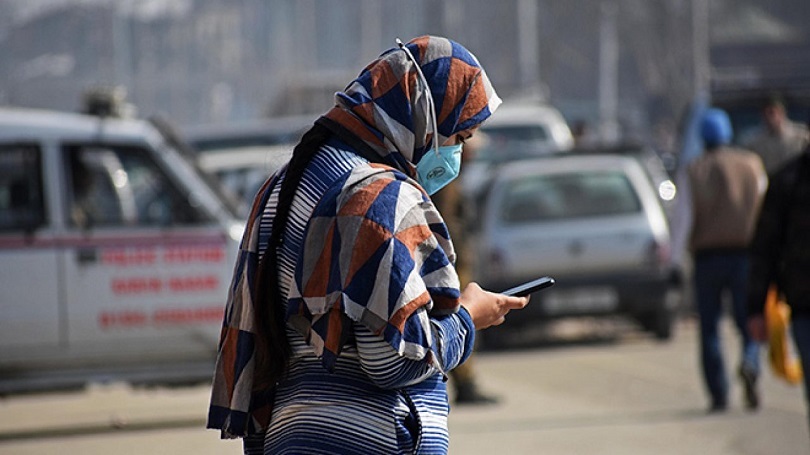
By Madiya Mushtaq
In an era where the world is increasingly interconnected through digital technology, the digital divide remains a significant social issue, particularly in rural India. While urban areas rapidly adopt and integrate new technologies, rural regions lag, creating a gap that exacerbates existing socio-economic disparities. Bridging this divide is not just a matter of technology but a crucial step toward achieving equitable development and ensuring that every citizen has the opportunity to thrive in the digital age.
Understanding the Digital Divide
The digital divide refers to the gap between those who have easy access to the internet and digital technologies and those who do not. This disparity is starkly visible in India, where the urban-rural divide is profound. According to a 2023 report by the Internet and Mobile Association of India (IAMAI), urban areas boast an internet penetration rate of 67%, while rural areas lag behind at 31%. This divide is influenced by factors such as infrastructure, affordability, digital literacy, and socio-economic conditions.
Consequences of the Digital Divide
The impact of the digital divide is far-reaching, affecting various aspects of life:
- Education: The COVID-19 pandemic highlighted the importance of digital access for education. While urban students seamlessly transitioned to online learning, their rural counterparts struggled due to lack of devices, connectivity issues, and inadequate digital literacy. This educational disparity threatens to create a generation of rural students who are significantly disadvantaged compared to their urban peers.
- Employment: Digital skills are increasingly becoming a prerequisite for many jobs. Without access to technology and the internet, rural populations miss out on job opportunities, skill development, and even basic job search capabilities. This perpetuates the cycle of poverty and unemployment in these areas.
- Healthcare: Telemedicine has the potential to revolutionize healthcare in rural India, providing access to specialists and reducing the burden on overstrained healthcare systems. However, without reliable internet access, rural populations cannot benefit from these advancements, exacerbating health disparities.
- Agriculture: Modern agricultural practices and market information are often disseminated digitally. Farmers without internet access miss out on crucial information about weather patterns, crop prices, and farming techniques, affecting their productivity and income.
Bridging the Digital Divide
Addressing the digital divide in rural India requires a multi-faceted approach:
- Infrastructure Development: The foundation of digital connectivity lies in robust infrastructure. The government’s BharatNet project, aimed at providing high-speed internet to rural areas, is a step in the right direction. However, timely and efficient implementation is crucial.
- Affordability: Ensuring that digital services and devices are affordable for rural populations is essential. Subsidies, low-cost devices, and affordable internet plans can help bridge the affordability gap.
- Digital Literacy: Building digital skills through training programs and educational initiatives is vital. Schools, community centers, and non-governmental organizations can play a significant role in imparting digital literacy.
- Public-Private Partnerships: Collaborations between the government and private sector can accelerate digital inclusion. Initiatives like Reliance Jio’s extensive network expansion have already demonstrated the potential of such partnerships.
- Policy Support: Formulating and implementing supportive policies that prioritize digital inclusion is necessary. These policies should focus on addressing the specific challenges faced by rural communities.
Conclusion
Bridging the digital divide in rural India is not just about technology; it is about ensuring that every citizen has equal opportunities for education, employment, healthcare, and overall well-being. As India marches towards becoming a digital superpower, it is imperative that rural areas are not left behind. By addressing the digital divide with urgency and commitment, we can pave the way for a more inclusive and equitable future.
In the words of Mahatma Gandhi, “The soul of India lives in its villages.” Let us ensure that this soul is not left disconnected in the digital age.
Views expressed in the article are the author’s own and don’t necessarily represent the editorial stance of Kashmir Observer
- The author is an advocate, Supreme Court of India
Follow this link to join our WhatsApp group: Join Now
Be Part of Quality Journalism |
Quality journalism takes a lot of time, money and hard work to produce and despite all the hardships we still do it. Our reporters and editors are working overtime in Kashmir and beyond to cover what you care about, break big stories, and expose injustices that can change lives. Today more people are reading Kashmir Observer than ever, but only a handful are paying while advertising revenues are falling fast. |
| ACT NOW |
| MONTHLY | Rs 100 | |
| YEARLY | Rs 1000 | |
| LIFETIME | Rs 10000 | |












